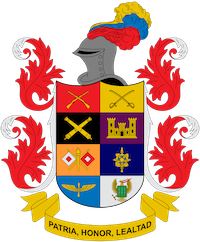Cooperation and Conflict in Indochina: the Case of the Sub-Region of the Greater Mekong
Abstract
The Greater Mekong Subregion (GMS) initiative raises questions about political, economic and military variables. These data are considered fundamental for the development of defense projects in the member states and, therefore, constitute the basic element for understanding regional geopolitics. The objective of this article is to analyze the strategic sense and geopolitical implications in the GSM. Thus, the perspective put forward leads to reflection on strategic developments in the GSM should be based on political, economic and military aspects. The consideration of aspects related to regional geopolitics and the influence of power units that may interfere in the region, constitutes the central element for the understanding of the political, economic and military environment in the GSM.
Downloads
References
Elias, N. (1993). O Processo Civilizador. Volume 2. Rio de Janeiro: Jorge Zahar, 1993.
Fiori, J. (2009). O poder global e a nova geopolítica das naçôes. Crítica y Emancipación, (2): 157-183, primer semestre 2009.
Bellwood, P. (1992). Southeast Asía before History. In TARLING. Nicholas, The Cambridge history of Southeast Asia, Cambridge: Cambridge University Press. https://doi.org/10.1017/CHOL9780521355056.004
Brown, T. (2007). China and South East Asia Mineral production 2001-2005. A product of the world mineral statistics database. British Geoloqical Survey, Keyworth, Nottingham, 2007. Recuperado de http://www.bgs.ac.uk/mineral-suk/statistics/worldStatistics.html
Cunha, G. & Lannes, A. (2012). Soft Law: uma relaçâo real? In Anais do VI Congreso Latinoamericano de Ciencia Política. Quito: FLACSO.
Glennon, J. (1981). Foreign Relations of tbe United States 1952-19541 Vol. XVI, In The Geneva Conference, Government Printing Office, Washington. Recuperado de http://digicoll.library.wisc.edu/cgi-bin/FRUS/FRUSidx?type=header&id=FRUS.FRUS195254v16&isize=text (Consultado el 20 de enero de 2014).
Hall, K. (1992). Economic History of Early Southeast Asia, En: Tarling, N. The Cambridge History of Southeast Asia. Cambridge: Cambridge University Press. https://doi.org/10.1017/CHOL9780521355056.006 PMid:8474487
Heye, T. (2005). Os determinantes políticos dos gastos militares no pós-Guerra Fria. Tese defendida no Programa de Pós-Graduaçâo em Ciência Política no Instituto Universitário de Pesquisas do Rio de Janeiro (IUPERJ).
lshida, M. (2003). Evaluating the Effectiveness of GMS Economic Corridors: Why is There More Focus on the Bangkok-Hanoi Road than the East-West Corridor? IDE Discussion Paper No. 123.
Jacobs, J. (1995). Mekong Committee History and Lessons for River Basin Development. The Geographical Journal, 161(2). https://doi.org/10.2307/3059971
Mccune, S. (1947). The diversity of lndochina's Physical Geography. The Far Eastern Quarterly, 6(4), French Indochina. https://doi.org/10.2307/2049430
Miller, E. (1946). Mineral Resources of Indo-China. Economic Geography. 22(4). https://doi.org/10.2307/141237
Peng, D. (2003). Subregional Economic Zones and lntegration in East Asia. Political Science Ouarterly. 117(4), 613-641. https://doi.org/10.2307/798137
Petty, W. (1640). Aritmética Política. Petty e Quesnay. Coleçâo Abril Cultural.
Stone, S. (2008). Evaluating projects in the GMS: North-South Economic Corridor. [paper on Internet] presented for Policy Dialogue on Aide for Trade, November, 2008, Paris - France. Recuperado de http://www.oecd.org/dataoecd/9/28/41597352.pdf
Wiemer, C. (2009). Economic corridors for the Greater Mekong Subregion. EAI Background Brief No. 479, disponible en http://www.eai.nus.edu.sg/BB479.pdf













